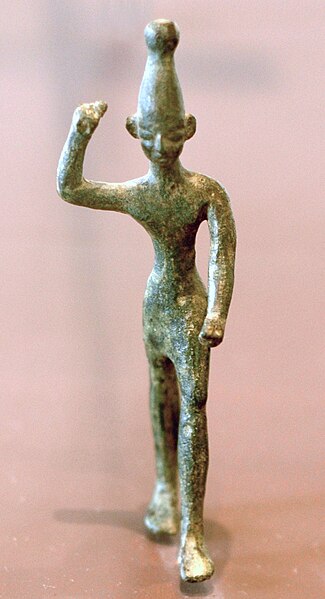Yam was a god representing the sea and other sources of water worshiped in various locations on the eastern Mediterranean coast, as well as further inland in modern Syria. He is best known from the Ugaritic texts. While he was a minor deity in Ugaritic religion, he is nonetheless attested as a recipient of offerings, and a number of theophoric names invoking him have been identified. He also played a role in Ugaritic mythology. In the Baal Cycle he is portrayed as an enemy of the weather god, Baal. Their struggle revolves around attaining the rank of the king of the gods. The narrative portrays Yam as the candidate favored by the senior god El, though ultimately it is Baal who emerges victorious. Yam nonetheless continues to be referenced through the story after his defeat. In texts from other archaeological sites in Syria, attestations of Yam are largely limited to theophoric names. In Emar he was among the many deities venerated during a local festival, zukru, which took place once every seven years.

One of the tablets of the Baal Cycle. Louvre.
Surviving fragments of the myth Astarte and the Sea.
The Canaanite religion was the group of ancient Semitic religions practiced by the Canaanites living in the ancient Levant from at least the early Bronze Age to the first centuries CE. Canaanite religion was polytheistic and, in some cases, monolatristic.
Ba'al with raised arm, 14th–12th century BC, found at Ras Shamra (ancient Ugarit), Louvre
The ruins of the excavated city of Ras Shamra, or Ugarit




